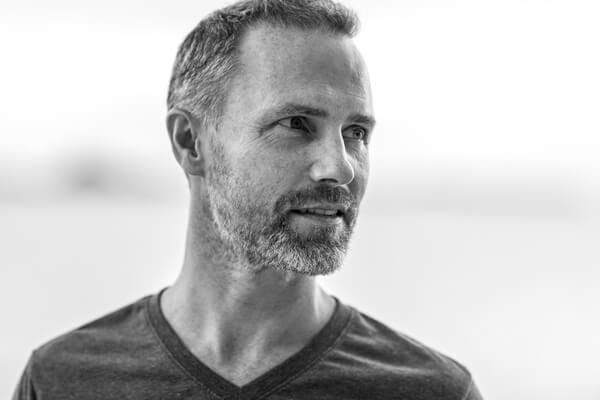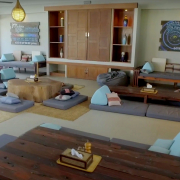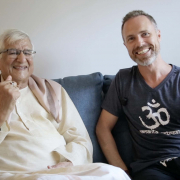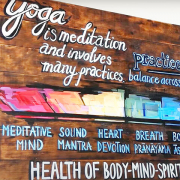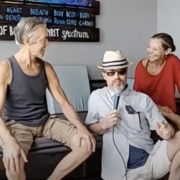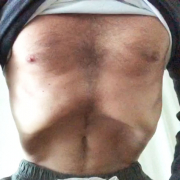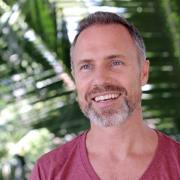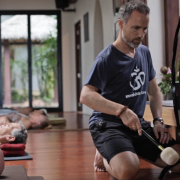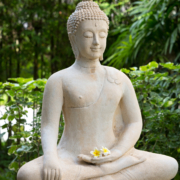 https://samahitaretreat.com/wp-content/uploads/2023/11/IMG_5161-scaled.jpg
2560
1707
Kirsten Mia
http://samahitaretreat.com/wp-content/uploads/2024/01/samahita-logo-v2.svg
Kirsten Mia2023-11-01 03:57:462023-11-02 06:11:16The Buddha, the Dharma, the Sangha
https://samahitaretreat.com/wp-content/uploads/2023/11/IMG_5161-scaled.jpg
2560
1707
Kirsten Mia
http://samahitaretreat.com/wp-content/uploads/2024/01/samahita-logo-v2.svg
Kirsten Mia2023-11-01 03:57:462023-11-02 06:11:16The Buddha, the Dharma, the SanghaPratyahara

Pratyahara is taught and discussed in many texts on yoga and related philosophies. A thorough presentation of the topic would require much reference, a lot more than is necessary for this article. So without getting too academic and caught up in all the texts let me attempt to offer a simple and workable understanding of it.
The most popular reference to Pratyahara is as one of the eight limbs (ashta – angas) as presented by Patanjali. He presents it as the fifth limb and later refers to these five limbs as part of external yoga (bahiranga yoga).
sva-vishayasam-pra-yoge chittasya sva-rupanukara ivendriyanam pratyaharah YS II. 54
When the senses cease their contact with the objects in their realm, they become assimilated with mind-field’s nature, a withdrawal, known as pratyahara
In practical terms pratyahara is not so much something you do as it happens. There are some techniques to aid it but it is primarily an outcome from the practice of pranayama and mindfulness practices. As it has to do with objects of the outside world it still is an external limb of yoga yet it is the bridge to the internal limbs, the final three of dharana, dhyana and Samadhi.
In a nutshell, when the energy of life, prana, has been managed skillfully through the methods of pranayama, then energy is concentrated within and does not travel to, or leak out of, the ever present sense organs. Though the organ remains, naturally as part of the body, the force behind it, which causes the contact with the outside object, is withdrawn. You no longer waste energy in an outward sense. This is a process cultivated over time till it becomes a true nirodha, or control of chitta vrittis, all the subtle activity, and one is moved to a deep internal state.
At the beginning of the Yoga Sutras Patanjali uses the word “nirodha” to explain how yoga is achieved. This “nirodha” is a channeling or controlling and the means to do this are later given under “abhyasa”, repeated practice, and “vairagya”, non-dependence or non-attachment. A high level of vairagya would be similar to a perfected pratyahara. This would come from your continuous effort to work on yourself. To watch your thoughts and behavior, treatment of others and yourself, manage, ideally skillfully, the energies of the body and breath, will in time refine the internal energetic process of life and lead to a greater control over the senses.
For Patanjali pranayama brings about the state of pratyahara which when perfected culminates and concentrates the energy at the base of the spine, without any further outward stimulation through the peripheral nerves, sense organs, so the practitioner has a deep internal experience that he calls dharana. In tantra and hatha it is called the experience of kundalini, stimulating our true potential energy thereby raising consciousness.
Your “world” consists of the things you come in contact with. How much you are pulled by them will cause you to feel free or trapped, joy or misery. Your experience of the world is directly based on the contact with it which is why two people in similar circumstances can have very different experiences. You can try to understand the other’s plight, and your higher sense will appeal to their circumstance and feel compassion, etc., but ultimately you are only experiencing all you come in direct contact with. Then when you go into a true deep sleep where does this world go? It did not cease. Only your contact with it did. So now at the point of pratyahara one has mastered the ability to indulge in the world, via the senses and mind activity, or withdraw and gain, as it were, an inner growth.
As pratyahara refines the practitioner goes from a mini experience of it in concentrated moments, such as in practice if practicing correctly, to a heightened awareness and mindfulness at all times throughout the day. In such a case the outer object is noticed, the sensation within is observed, the capacity to withdraw is present and integrity is preserved so to speak. Early on an effort to withdraw is required but over time there is an automatic internal centering due to prolonged practice that the possibility of distraction or temptation is almost minimal. The outer object has minimal pull on the senses or rather the energy being pulled through the sense organ. This does not mean you become boring but rather a champion over your desires and sensual pulls and can still enjoy the activity of the senses as need be in life. You eat chocolate, enjoy it. But are you pulled strongly to eat it every time you see it or think about it.
To practice pratyahara itself is really a practice of awareness, of mindfulness, of self-discipline. For this to occur you need aids, support, grounded strength, which is the guidance and advice from the first four limbs; how you live and how you manage the energies of life. If you are making an effort to live peacefully, honestly and respectfully and are daily practicing a routine of techniques that are based on a sound tradition, the result will be an increased level of awareness. From there the advanced techniques of pranayama will bring about a more complete pratyahara. In other paths, the heightened awareness of the mind’s functions and the continual practice of observance on it, as is taught in various vipassana traditions, will lead to the activity of the mind, the energy or prana, being inward, centralized, internally concentrated, so the flow is reduced out the senses, and in the moment of deep experience it is temporarily stopped, or withdrawn so the senses receive no output and as a result the mind does not make contact with the external object. When this happens the concentration of energy within will cause such a concentration that the only outcome would be dharana, an awakening of the potential energy.
Life functions through the senses and wants to pull us out all the time. The yoga process says, “oh man, turn within”. Upon living clean and honorably and mastering practice, especially the flow of the breath, such a shift in the flow of internal energy can occur that it is not automatically pulled outward but managed well within. As the practitioner continues to refine this a tremendous sense of inner strength as well as calm and peace arises. Not a state of leaving the world but rather a capacity to better handle the world and ultimately be of more help to others. But do know this, the only way is through a form of self-practice, it does not magically appear, it is earned. Love, care and attention can assure that. Patience, enthusiasm and perseverance bring it about over time.
So, daily do your practice with a sense of connection and feeling, and throughout the day try to observe your thoughts, words, actions and desires. Don’t suppress them but build the awareness. This is why you need care and patience. And be happy !!
Dr. Paul Dallaghan’s expertise with breathwork, body and meditative practices comes from three sources: (1) three decades of daily dedicated practice and teaching these techniques; (2) uniquely acknowledged in the Yoga tradition by the title of “Master Yogi-Prānācharya (expert in breath)”, following an immersion in the original culture through one-on-one direct training in practice and study of ancient texts; (3) a PhD in doctoral scientific research at a leading US university (Emory) covering both the tradition and science of yoga and breath practices in terms of stress, health and aging. As a result, Paul occupies a unique space to impart genuine teaching and science on the breath, body, and meditative practices, seen as a Teacher-of-teachers and identified to carry on the tradition of Pranayama. His sincere and ongoing role is to teach, write and research, to help put out experienced and authentic information on these areas of how we live, breathe and be, to help people improve their mental and physical health, and live more fulfilling lives.
For more on his background see his bio
More from the Samahita Blog
